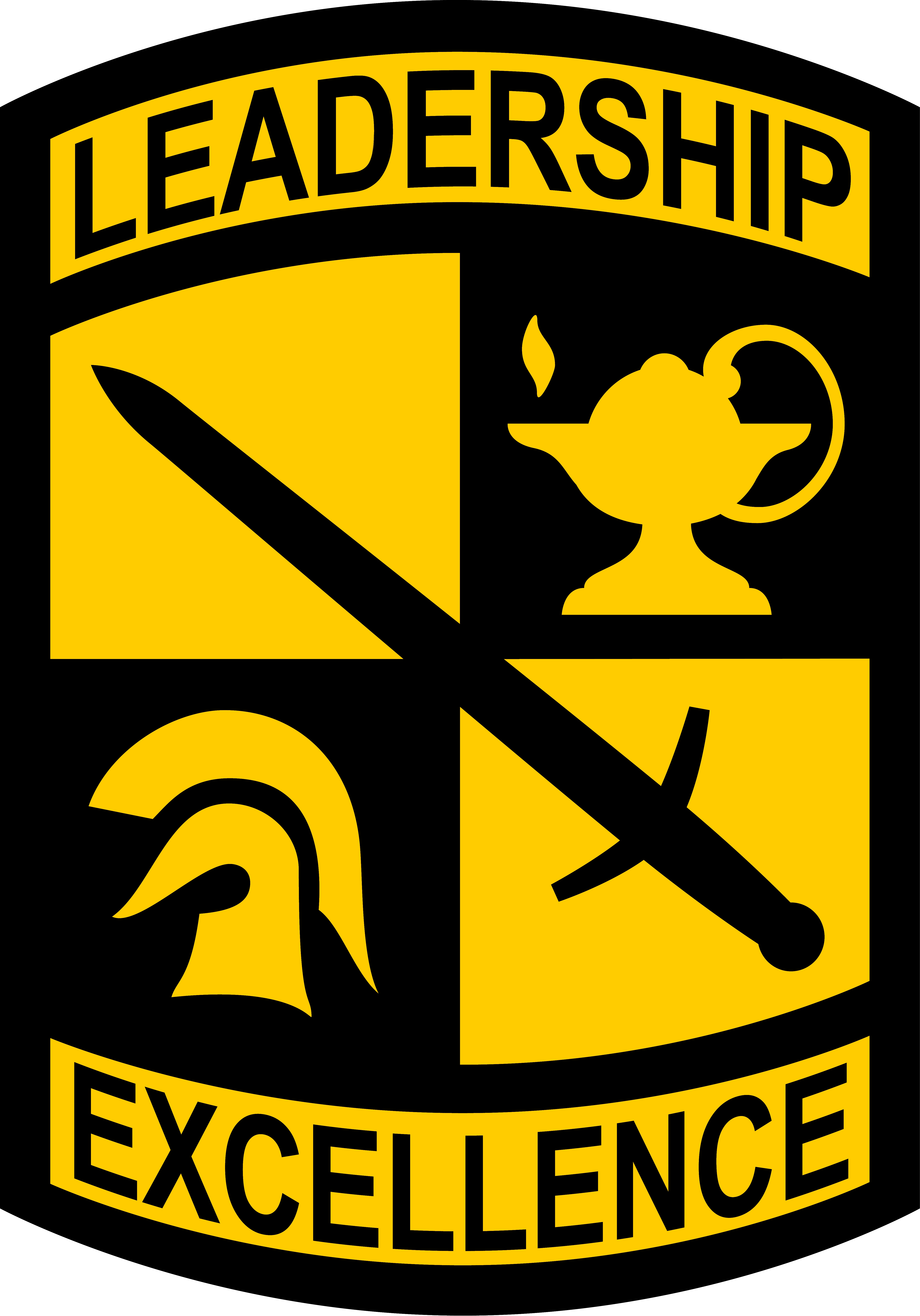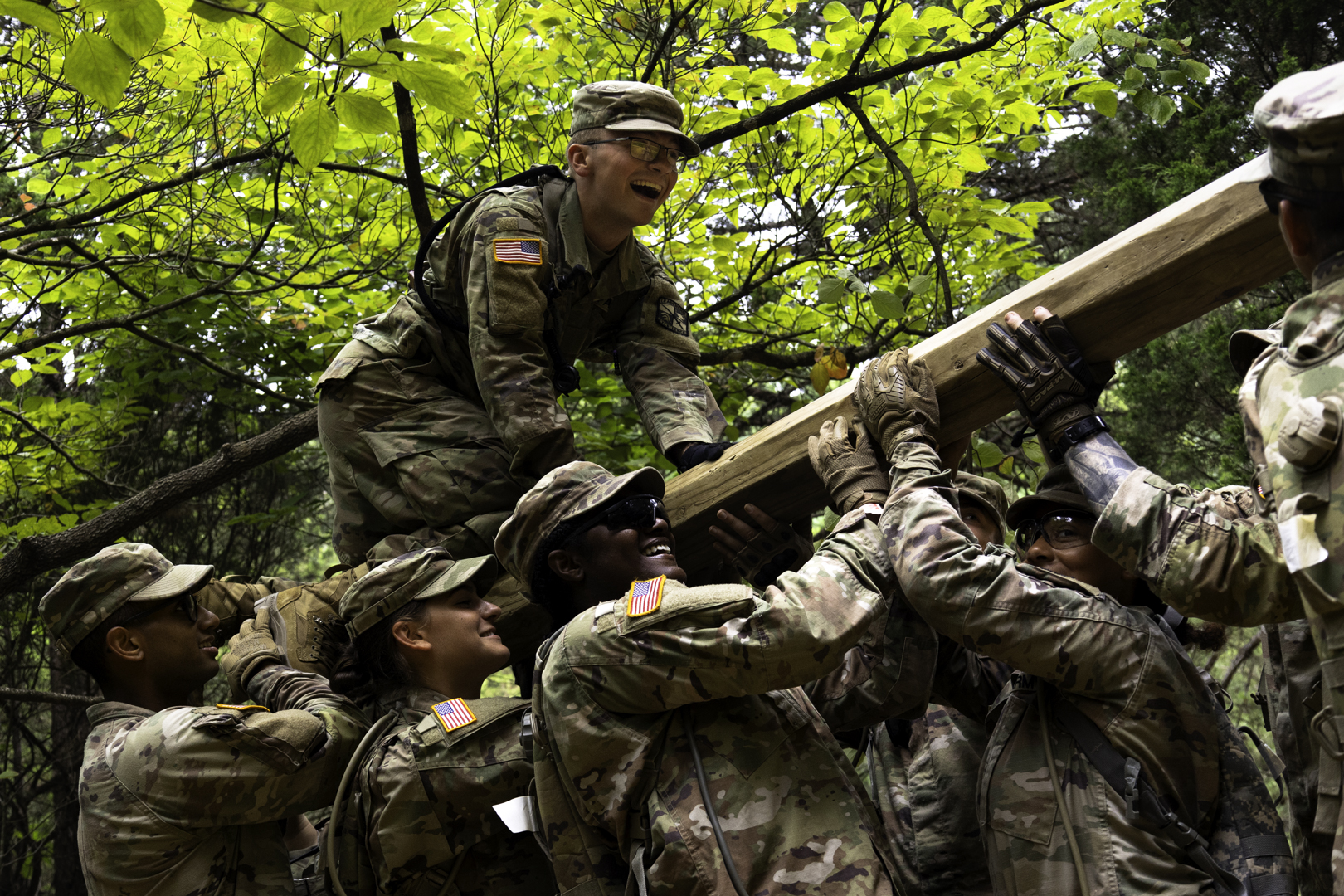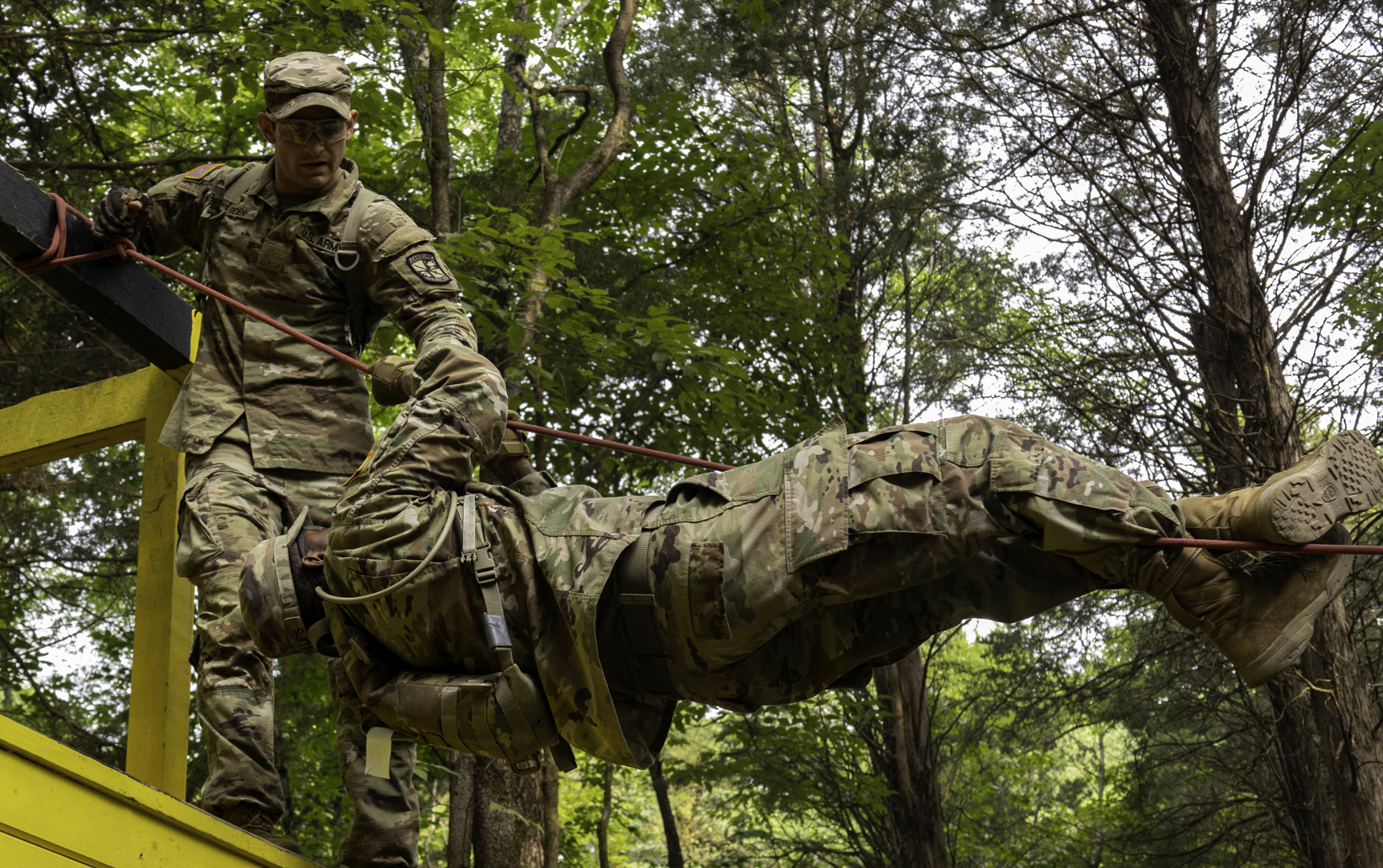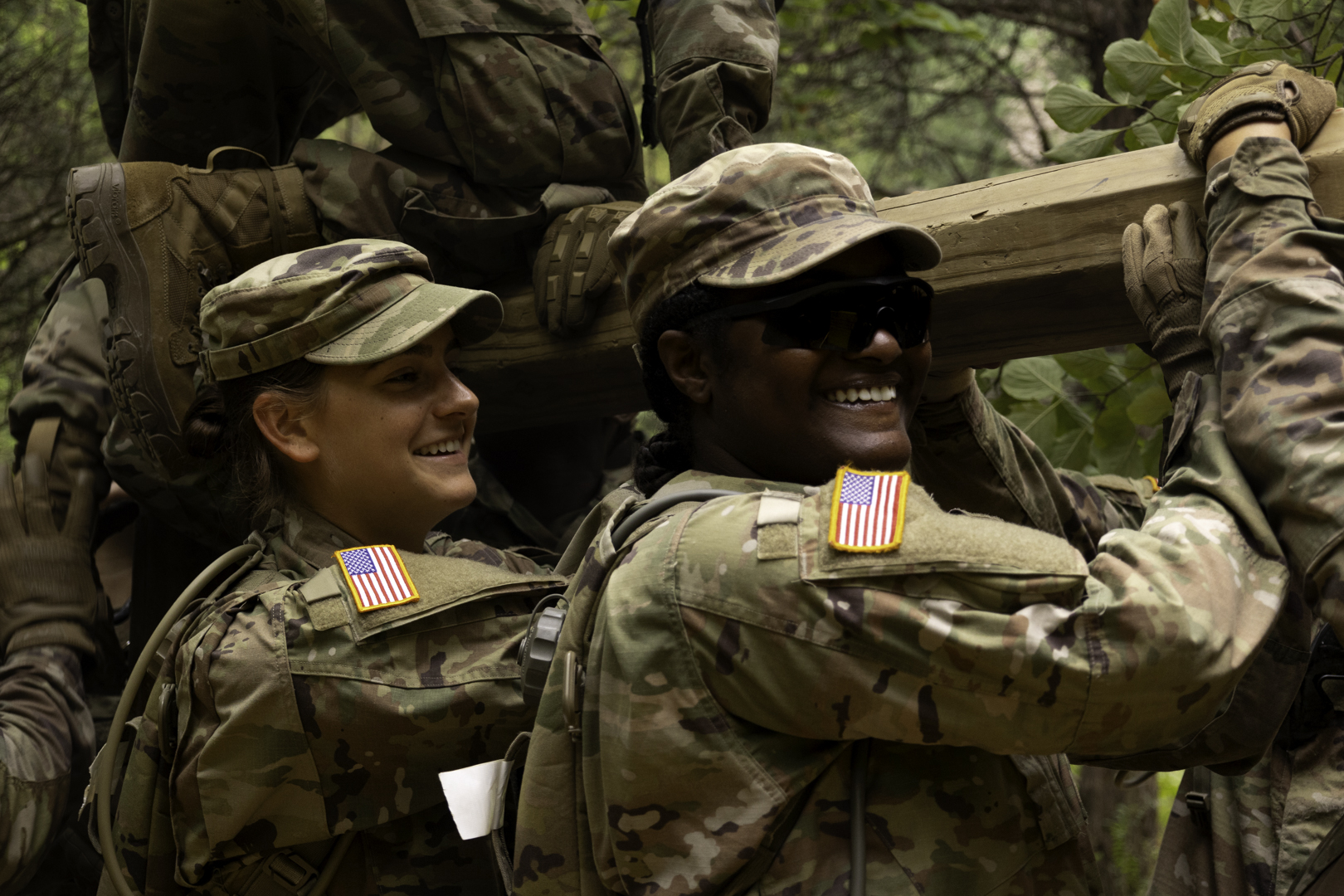Fort Knox, Ky. – Cadets of 10th Regiment, Advanced Camp are deep in a brainstorming session. They only have ten minutes to strategize before they’ll have to put their plan to the test on the Field Leaders Reaction Course. FLRC is designed to build teamwork and leadership skills through simulated missions, each with time constraints and limited materials.
“Teamwork is crucial because you can’t do it as just one person,” said Cadet Lamonica Smith, Marion Military Institute, Al. “Everyone has to work together to get through the mission. So you have to have that teamwork, that trust and that bond to get through this.”
As the seconds tick by, Cadets have to come together as a team if they’re to have any chance of completing their mission. On July 26, 2024, these Cadets face down various obstacles as part of Cadet Summer Training.
“One of the biggest challenges of FLRC is picking the right ideas,” Smith said. “Everyone on your team has so many different suggestions, some good, some bad. It’s up to you to figure out which one works the best.”
Leadership is a collaborative effort. In order to lead, Cadets must first learn to listen and make sure every member of their team has a part to play. Everyone has their strengths, some physical, others tactical.
“You really have to listen to each other and be patient with each other,” said Cadet John Shirley, Rowan University, Nj. “You have to understand where each person is coming from because everyone is going to see the challenge differently. And while one person may be talking louder than someone else, that quieter person may see something another way and have the actual solution.”
Brute strength alone won’t get Cadets through FLRC; only a select few tactics can utilize the time and materials in the way necessary for success. That’s what makes those brainstorming sessions so important.
“It definitely helps you think critically because this isn’t something you’ve ever done on a daily basis,” Smith said. “So you have to see it for the first time and just get your brain rolling with ideas, and then go from there.”
Once a team has their plan, members take on different roles to implement it. With limited materials, it’s often those that go first who face the obstacles’ biggest challenges. Shirley volunteered to lead the way for his team, crawling over a high beam held up only by his teammates’ strong, yet tired arms.
“I was just trying so hard,” Shirley said. “I’m not the biggest fan of heights, so I don’t care if it was only four feet off the ground–I’m still struggling. But I could do it because I had all my teammates behind me cheering me on.”
Camaraderie is an essential piece when it comes to pushing through FLRC. When you’re at the end of your rope, your battle buddies will find a way to get you through.
“Even though we’re just at the beginning of CST, it’s still stressful at times,” Smith said. “We’re tired. We’re exhausted. But having that laughter and that bond building between us already? It just really gets me through this.”
FLRC teaches skills that can’t be learned sitting in the classroom. A practical exercise in tactics, teamwork, and refining plans, this course helps Cadets see challenges with a new perspective, which will help them when they advance to their field training exercises.
“Just take your time when you’re facing a challenge like this,” Smith said. “Don’t rush. Just stay calm and hear everyone’s opinion. Whatever you do, make sure you’re being a team player.”






